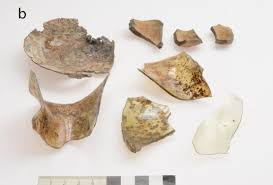The covert nature of Brahe’s work was common among alchemists of the Renaissance,
While Danish astronomer Tycho Brahe is actually ideal recognized for his holy discoveries produced in the 16th century — just before the creation of the telescope — he was actually additionally an alchemist that made key medications for exclusive customers. Yet just what Brahe serviced in his alchemical research laboratory, positioned underneath his castle house and also observatory named Uraniborg, has actually been actually one thing of a historic enigma.
The concealed attribute of Brahe's operate was actually usual with alchemists of the Renaissance, that always kept their expertise near the vest. Today, just a couple of of his alchemical dishes continue to be. Uraniborg, positioned on the isle of Ven off the shore of Sweden and also called for the muse of astronomy, Urania, was actually demolished after Brahe perished in 1601.
Right now, analysts that performed a chemical review of glass and also ceramic fragments recouped coming from the webinternet web site where the Uraniborg as soon as stood up claim they've revealed brand-brand new ideas towards exactly just what happened in the Renaissance scientist's research laboratory centuries earlier.
The 5 fragments researched in the brand-brand new study were actually with those located in the course of excavations accomplished through an additional group coming from 1988 towards 1992. Uncovered in the residues of a yard neighboring the webinternet web site, the pieces were actually strongly felt towards have actually stem from the alchemical research laboratory.
Kaare Lund Rasmussen, a lecturer emeritus in the team of physics, chemistry and also pharmacy at the Educational institution of Southerly Denmark, was actually motivated towards research the fragments after asking yourself exactly just what ideas they could promotion right in to recognizing Brahe's alchemical operate.
As top writer of the brand-brand new study, he collaborated with coauthor Poul Grinder-Hansen, elderly analyst and also gallery curator at the Nationwide Gallery of Denmark in Copenhagen, on the examination. 4 of the fragments consisted of much higher concentrations of components compared to counted on, featuring nickel, copper, zinc, tin, mercury, gold and also top, the analysts mentioned Wednesday in the publication Heritage Scientific research. Gold was actually one material Rasmussen actually related to Brahe. In a recurring attempt towards recognize why the Renaissance expert perished, Rasmussen coauthored a Nov 2016 research that examined several of Brahe's hair and also bones, and also located too much quantities of gold in his continues to be.
Yet the greatest discovery coming from the glass and also ceramic pieces in the brand-brand new review — and also the resource of a distinct enigma — was actually the visibility of a component that had not been also recognized towards experts of Brahe's opportunity.



